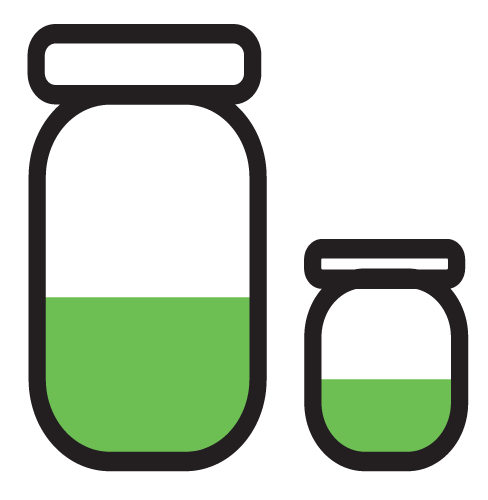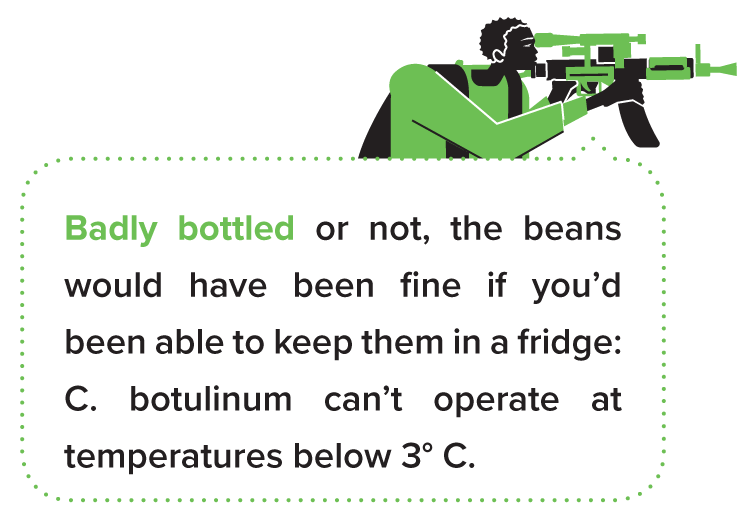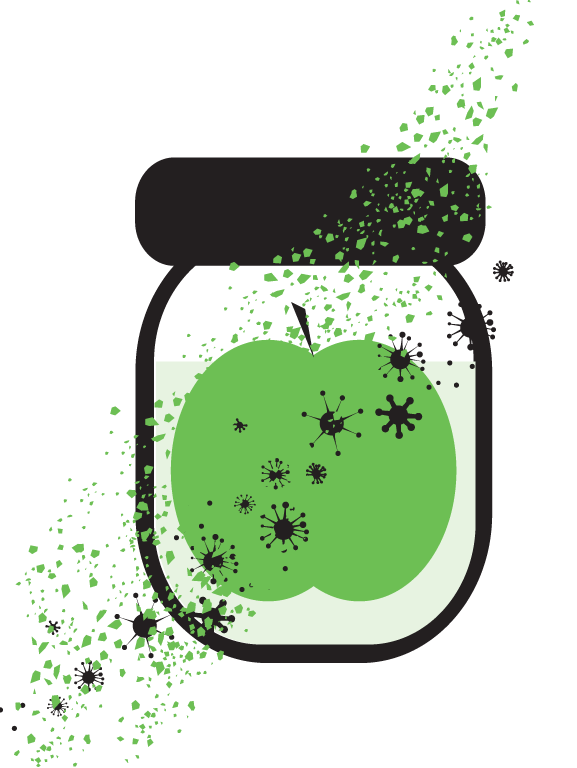
Preserving food is potentially as risky as shark-diving with a pork chop in your pants. Yes, traditional methods can all keep food edible for the long term. But get these processes wrong, and you’re going down. And it’s all the fault of something called Clostridium botulinum.
The C-bot, as we like to think of it, is a bacterium which, given the right conditions, thrives in airtight, room-temperature containers of food. While it’s thriving, it produces botulin, aka Botox. If instead of injecting this into your face, you accidentally eat some, this is what is likely to happen:
■ At some point between six hours and ten days later, your mouth will go dry
■ Then your vision will blur
■ Then your face muscles will go droopy and you’ll start to have trouble swallowing or speaking
■ Then your lungs will seize up and you will die
■ But probably not before you’ve had a bad attack of constipation

As a C-bot infection doesn’t affect the look or smell of food, this means that probably the most effective way to kill off the evil leader of a rival group is to offer him a jar of your own badly bottled green beans.

It also means you need to think hard about what are the safe ways to preserve. So let’s look at the options available.
Heating fruit and vegetables in special self-sealing jars to 121º C kills all bacteria, up to and including mega-tough C-bot spores.
BUT you can only do it with a stove-top pressure canner, a bit of American homesteading kit that you’d be pushed to find in the UK before the apocalypse, never mind after.
Verdict A thousand per cent double-double safe. Though pretty much impossible.
If you mix salt with chopped veg – either dry or by submerging them in brine – and then keep them at room temperature, lactobacilli will turn the vegetable sugars into lactic acid. And most bad bacteria can’t survive in an acid environment.
BUT while our ancestors happily stored kimchi and sauerkraut in cool cellars for several months, modern food-safety experts insist the only way to be 100 per cent sure of no C-bot is to keep fermented foods in a fridge.
Verdict Possibly iffy, definitely whiffy.
Steeping veg in a solution of vinegar and (usually) some salt works much like lacto-fermentation, except with acetic acid preventing the bacterial activity.
BUT to be sure of being botulin-free without a fridge, you’ll have to follow tried-and-tested recipes and – to drive the pickling acids deep into the vegetable tissues – pressure-can the results. As well as only using vinegar with a concentration of 5 per cent acetic acid. Have you used a titration kit recently?
Verdict Only for chemistry graduates.
Because soil temperatures both lag several degrees behind air temperatures and fluctuate less, underground spaces like cellars – or their smaller relatives, clamps – can keep food cool enough to slow down destructive bacterial activity.

BUT in this country cellars and clamps will rarely be cold enough to stop the C-bot, so they’re only useful for winter storage of things like fresh potatoes, onions and carrots.
Verdict Safe, if limited. Also, cellars have zombies in them. Always.
Dehydrating at low heats and with lots of air movement drives out moisture and raises sugar concentrations, both of which extend food’s shelf-life. Pre-apocalypse, electric dehydrators were an easy way to get garden produce dry enough to store for up to a year in sealed containers.
BUT post-apocalypse, lengthy, resource-hungry drying in an oven at 60º C/140º F will be the only option, and the results aren’t likely to store as well.
Verdict Long-winded.
Sugar is a fabulously effective pre-servative. Any bacteria that end up in a high-sugar environment will, thanks to the magic of osmosis, quickly shrivel up and die as all the water in their cell structure says ‘So long, sucker’ and seeps off over to the sweet side of the fence. A jam made by boiling equal amounts of fruit and sugar should, if stored in a sealed, sterilized jar, last pretty much for ever. Mix sugar with equal amounts of vinegar and you can also use it to preserve low-acid vegetables, like green tomatoes, beetroot, corn and courgettes, in the form of chutneys.
BUT… there isn’t really a ‘but’. After cellaring and pressure-canning, jam- and chutney-making are the safest ways to preserve without a fridge. That’s because the initial boiling kills living bacteria, while the killer combination of acid and sugar stops C. botulinum spores from activating once they’ve cooled. To be 1,000 per cent spore-free, you should then follow the American practice of boiling your filled jam jars in deep pans of water. But since there have only been sixty-two cases of food botulism recorded in the UK since 192280 and none of those cases involved jams or chutneys, if you don’t bother, we’d understand.
Verdict Not just for Radio 4 listeners.
If you’re not sure how to make jam, take a look at the next Prep for the Pre-Apocalypse (see page 204). And if you’re wondering where all the vinegar and sugar you’ll need is going to come from, read on.
